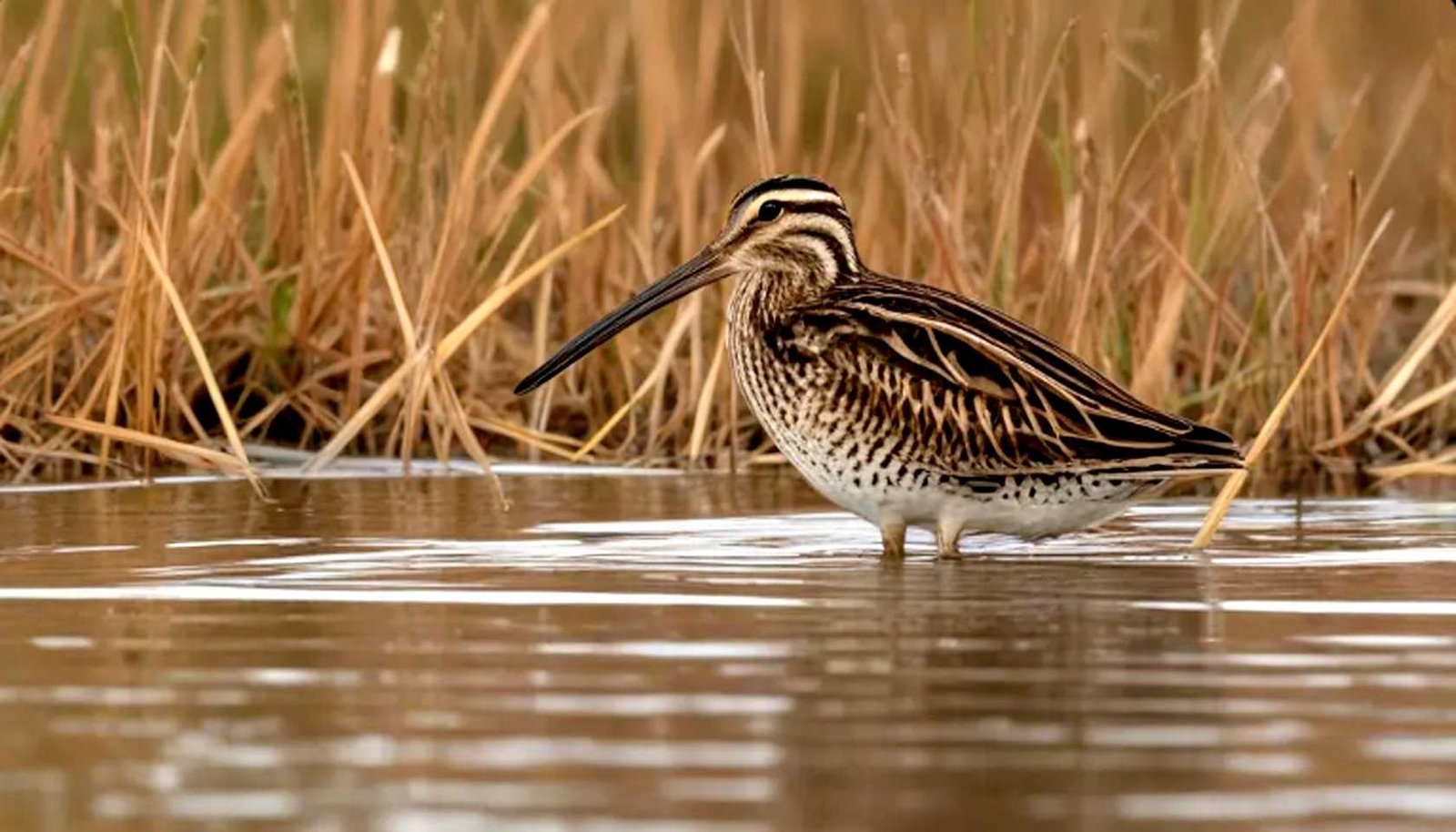Snipe hunting is a term that often sparks curiosity and raises questions. While some may associate it with the elusive bird, the common snipe (Gallinago delicata), the reality is more nuanced. This comprehensive guide delves into the origins, practices, and ethical considerations surrounding snipe hunting, offering a balanced and informative perspective.
The term “snipe hunt” has a dual meaning. It can refer to the actual hunting of snipe birds, which historically occurred in various parts of the world, including North America and Europe. However, it also evolved into a folkloric tradition, often used as a practical joke or prank.
The Allure of Actual Snipe Hunting
Before exploring the concept of “snipe hunting,” it’s crucial to understand the actual snipe. These are small, migratory shorebirds belonging to the family Scolopacidae. They are known for their distinctive camouflage plumage that blends seamlessly with their wetland habitats and their zigzag flight pattern when flushed from cover.
While the term “snipe hunting” is primarily associated with the practical joke, it’s important to note that actual snipe hunting is a regulated hunting activity in some regions. However, it’s crucial to understand the legal regulations, ethical considerations, and responsible hunting practices before engaging in such activities.
Remember: Always obtain the necessary licenses and permits, familiarize yourself with the hunting regulations in your specific location, and prioritize ethical and sustainable hunting practices.
Ethical Considerations: Responsible Hunting Practices
Ethical considerations are paramount when discussing any hunting activity, and snipe hunting is no exception. Here are some key points to remember:
- Sustainable hunting: Ensure that snipe hunting practices are sustainable and do not harm the overall population. Following established bag and possession limits is crucial.
- Respectful hunting: Uphold ethical hunting practices by avoiding hunting near feeder areas, using non-toxic shot, and properly disposing of spent shotgun shells.
- Species identification: It’s imperative to be able to distinguish snipe from other protected shorebirds like sandpipers and plovers to avoid accidental hunting of non-target species.
Responsible hunting involves respecting wildlife, adhering to regulations, and prioritizing sustainability. If you’re unsure about the ethical implications of snipe hunting in your region, it’s best to err on the side of caution and refrain from the activity.
The Elusive Snipe: A Challenging Quarry
The actual hunting of snipe birds requires considerable skill and knowledge due to their:
- Small size: Snipe are relatively small birds, making them difficult to spot and hit in flight.
- Erratic flight pattern: Their zigzagging flight pattern adds another layer of challenge for hunters.
- Habitat: They prefer wetlands and marshy areas, which can be challenging to navigate and require specific hunting techniques.
It’s crucial to remember that snipe hunting regulations vary significantly across different regions and countries. It’s essential to consult local wildlife authorities and obtain the necessary licenses and permits before engaging in any hunting activity.
Beyond Ethical Hunt: Snipe Hunting as a Practical Joke
The term “snipe hunting” primarily refers to a practical joke or fooler’s errand, particularly prevalent in North America. It involves tricking someone into searching for a non-existent creature called a “snipe”. The prank typically involves sending the unsuspecting individual on a wild goose chase, often to remote or unfamiliar locations, with elaborate instructions on how to “catch” the elusive snipe.
Historical Context: The origins of snipe hunting can be traced back to the mid-1800s in North America. It was a common prank played by seasoned outdoorsmen on newcomers or younger individuals, often during camping trips or hunting expeditions.
The Elements of a Snipe Hunt: A Lighthearted Prank
While the “snipe” itself is a fictional creature, the prank often involves elaborate storytelling and elaborate instructions. Here are some common elements of a snipe hunt:
- Creating a believable story: The prankster concocts a story about the “snipe,” describing its unique features, habitat, and even its “weaknesses” that can be exploited for capture.
- Providing “special equipment”: The unsuspecting individual might be given absurd or useless tools, like a bag with holes or a special type of “snipe call,” further perpetuating the elaborate ruse.
- Sending them on a wild goose chase: The individual is often sent to a specific location, usually remote or unfamiliar, with detailed instructions on how to attract and capture the non-existent creature.
The Ethical Considerations: Respect and Responsible Recreation
While snipe hunting is primarily a lighthearted prank, it’s crucial to approach it with ethical considerations and respect. Here are some key points to remember:
- Ensure safety: The prank should not involve any activity that could put the individual at risk, either physically or emotionally.
- Respect boundaries: The prank should be played in good humor and shouldn’t cause undue stress, embarrassment, or harm to the individual.
- Be mindful of the environment: Avoid sending individuals to restricted areas or engaging in any activity that could harm the environment.
It’s essential to be transparent and reveal the prank after a reasonable amount of time to avoid causing frustration or prolonged confusion.
Conclusion: Understanding the Nuances of Snipe Hunting
The term “snipe hunting” carries a dual meaning, referring both to a lighthearted prank and, in specific contexts, to an actual hunting activity. By understanding the historical context, recognizing the ethical considerations, and respecting the difference between the two, you can appreciate the full picture behind this intriguing phrase.
- Arkansas Snipe Hunting Season 2024: Quick Guide - March 2, 2024
- Arizona Snipe Hunting Season 2024: A Quick Guide - March 2, 2024
- Alaska Snipe Hunting Season 2024: A Quick Guide - March 2, 2024

